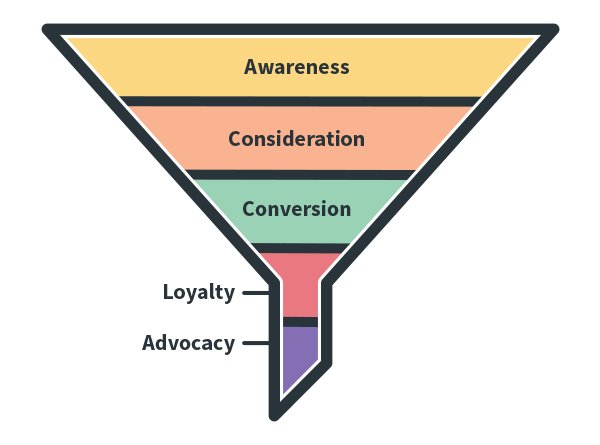DivvyHQ Book Club: Top of Mind by John Hall
One of the ultimate goals for us here at DivvyHQ is to become known as the go-to product for businesses that want to improve their content marketing process. Whether they’re looking for task management help, an editorial calendar that helps provide them with either a holistic or a granular view of their planned content, or a robust reporting engine (or all of the above!), we want to be the first thing that comes to our target customer’s minds when they’re beginning to research software platforms.
According to John Hall, author of Top of Mind: Use Content to Unleash Your Influence and Engage Those Who Matter to You, we need to achieve “top-of-mind” status for this to happen. According to Hall, top-of-mind status involves an irresistible combination of influence, trust, value, and timing, and Hall’s highly readable book walks the reader through his personal strategies and techniques to achieve this presence in their customer’s minds.
Who Should Read This Book
Anyone interested in skyrocketing the growth of their business, or simply looking for some self-improvement tactics, will enjoy this book.
Yes, Top of Mind is a “business” book, touting the effectiveness of content (written content in particular) and thoughtful distribution strategies in achieving top-of-mind status, but the first half of the book broadens the scope of this concept, explaining that by cultivating meaningful relationships, not only can you grow your startup, but improve all aspects of life, from family relationships to non-career related goals (more on that later).
Hall digs into the different psychological facets of what it takes to reach top-of-mind status (be prepared to face some harsh truths about yourself while answering his likability questionnaire!), touching on sports and pop-culture references along the way for some added fun.
Targeted Content Through the Buyer Journey
The second half of Hall’s book takes the reader more specifically into content territory, emphasizing how it is truly among one of the highest-impact ways to reach and connect with those in your audience. His real-world example of a set of parents making their journey through the preschool selection process vividly portrays how targeted content can make or break a buyer’s decision at any stage in the content marketing funnel (see below).

In Hall’s example, the preschooler’s parents (Ben and Michele) were bombarded with garbage ads poorly disguised as helpful content in the “awareness” stage of their search. These folks, like so many consumers these days, were smarter than that. One particular article by a school’s administrator (with no shady sales agenda) stood out, and as Ben and Michele gradually got closer to their purchasing decision, the nature of the content that stood out to them (all by that same administrator) shifted.
Hall recommends such strategies as introducing exceptional gated content to increase the possibility of conversion, leveraging third-party credibility, and gradually introducing company-oriented content onsite (preferably in the “consideration” stage). The vivid example Hall lays out and the clear way in which he presents it truly makes this a “duh” moment. Why aren’t more companies thinking in this way?!
(Hey, by the way… Do you need a tool where you can manage and differentiate your content throughout your buyer’s journey process? I know just the one, built to do exactly that!)
Using Content to Tear Down Silos
One of the major points in the latter half of Hall’s book is that reaching top-of-mind status through content efforts shouldn’t be limited to only your marketing department. Hall advises against limiting your thought leadership efforts to just c-suite executives (why wouldn’t you want to take advantage of the reach of all of your employees’ social networks, after all?), and to extend your company’s content distribution to the sales and HR teams as well.
Employees on these teams are in a unique position to deliver content directly to leads and potential talent, so it’s worth taking some time to think about the relationship between these departments and your existing content initiative.
Perhaps you need to beef up the content budget for these departments, or you need to make sure your sales reps are actively aware of all content you’re publishing, just in case the perfect opportunity to forward it along to a lead arises. Your recruiting team can use content to attract high-quality applicants, as well, by publishing articles that speak to the values and culture of your company.
Think beyond the marketing team, and your content efforts can go far.
The Bottom Line
Top of Mind ends much like it begins: with Hall stressing the importance of creating valuable human relationships in achieving top-of-mind status. Being helpful, likable, and authentic is not a challenging concept to grasp, and certainly not an exact science, but Hall has some suggestions to take to heart in your business (and personal!) dealings to cultivate what he calls a “helpfulness practice”. Just to name a few:
- Offer personal time
- Give (ethical) gifts
- Provide referrals
- Personalize experiences
- Offer transparent feedback
Seems intuitive, right? Hall’s argument that being, basically, a better human being will expand not only your business’s growth and opportunities, but also make you a happier, more-fulfilled person. A valuable read for individuals and businesses alike, Top of Mind offers up tangible blueprints, exercises, and resources for putting these ideas to practice. Anyone who wants their company to become the go-to product or service in their space would be wise to pick it up.

